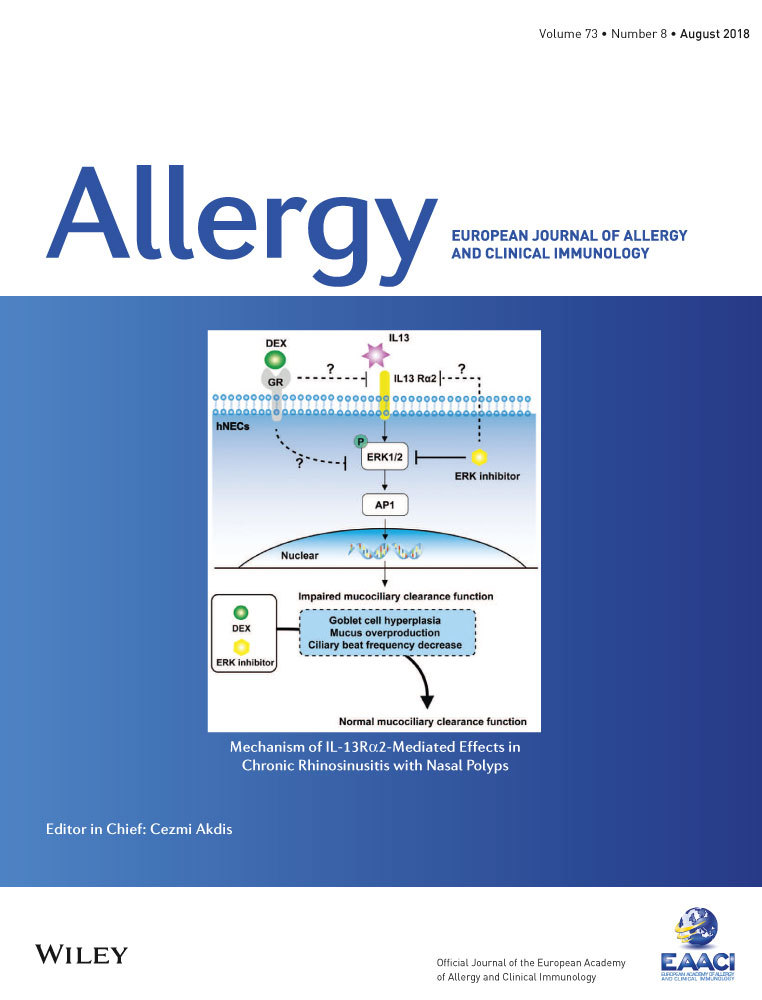IL-37 inhibits IL-4/IL-13-induced CCL11 production and lung eosinophilia in murine allergic asthma
Abstract
Background
IL-37 is emerging as an anti-inflammatory cytokine, particularly in innate inflammation. However, the role of IL-37 in Th2-mediated allergic lung inflammation remains uncertain. We sought to determine the role and the underlying mechanisms of IL-37 in the development of house dust mites (HDM)-induced murine asthma model.
Methods
We examined the effect of IL-37 administration during the sensitization or challenge phase on Th2-mediated allergic asthma induced by inhaled HDM. Cellular source of CCL11 and distribution of IL-37 receptors, IL-18Rα and IL-1R8, were determined in HDM-exposed lungs. Finally, we examined the effect of IL-37 on CCL11 production and STAT6 activation in different primary lung structural cell types upon IL-4/IL-13 stimulation.
Results
IL-37 had no effect on HDM sensitization, but when administrated during the challenge phase, significantly attenuated pulmonary eosinophilia, CCL11 production, and airway hyper-reactivity (AHR). Interestingly, IL-37 treatment had no significant effects on lung infiltrating T cells and Th2 cytokine production. Intranasal co-administration of CCL11 reversed the inhibiting effect of IL-37 on HDM-induced pulmonary eosinophilia and AHR. Furthermore, we demonstrated that CCL11 was primarily expressed by fibroblasts and airway smooth muscle cells (AMSC), while IL-37 receptors by tracheobronchial epithelial cells (TEC). In vitro study showed that IL-37 inhibited IL-4/IL-13-induced STAT6 activation and CCL11 production by fibroblasts and AMSC, which was dependent on its direct action on TEC. Moreover, cell contact was required for the inhibitory effect of IL-37-treated TEC.
Conclusions
IL-37 attenuates HDM-induced asthma, possibly by inhibiting IL-4/IL-13-induced CCL11 production by fibroblasts and AMSC via its direct act on TEC.
CONFLICT OF INTEREST
The authors declare that they have no conflicts of interest.




